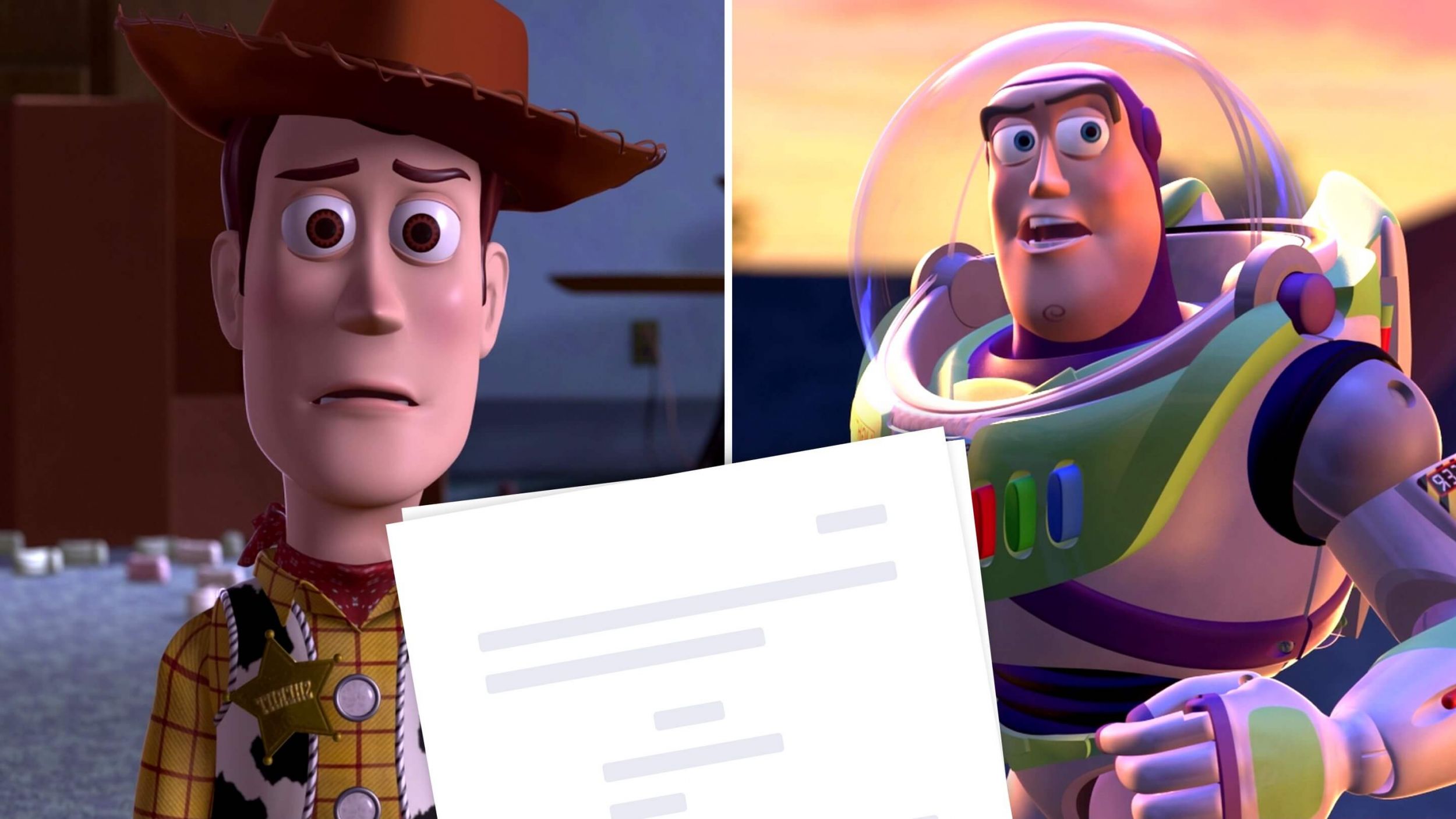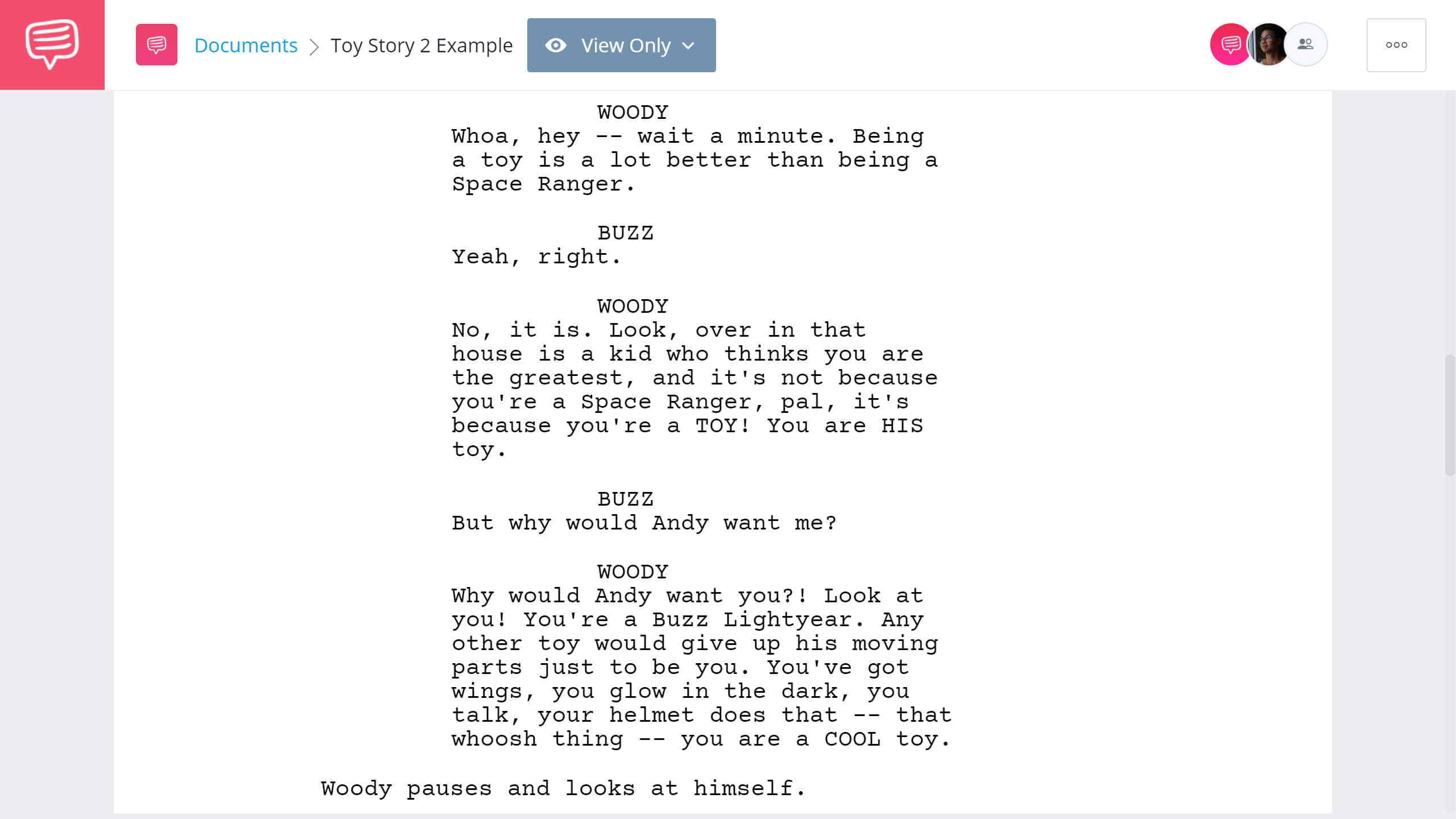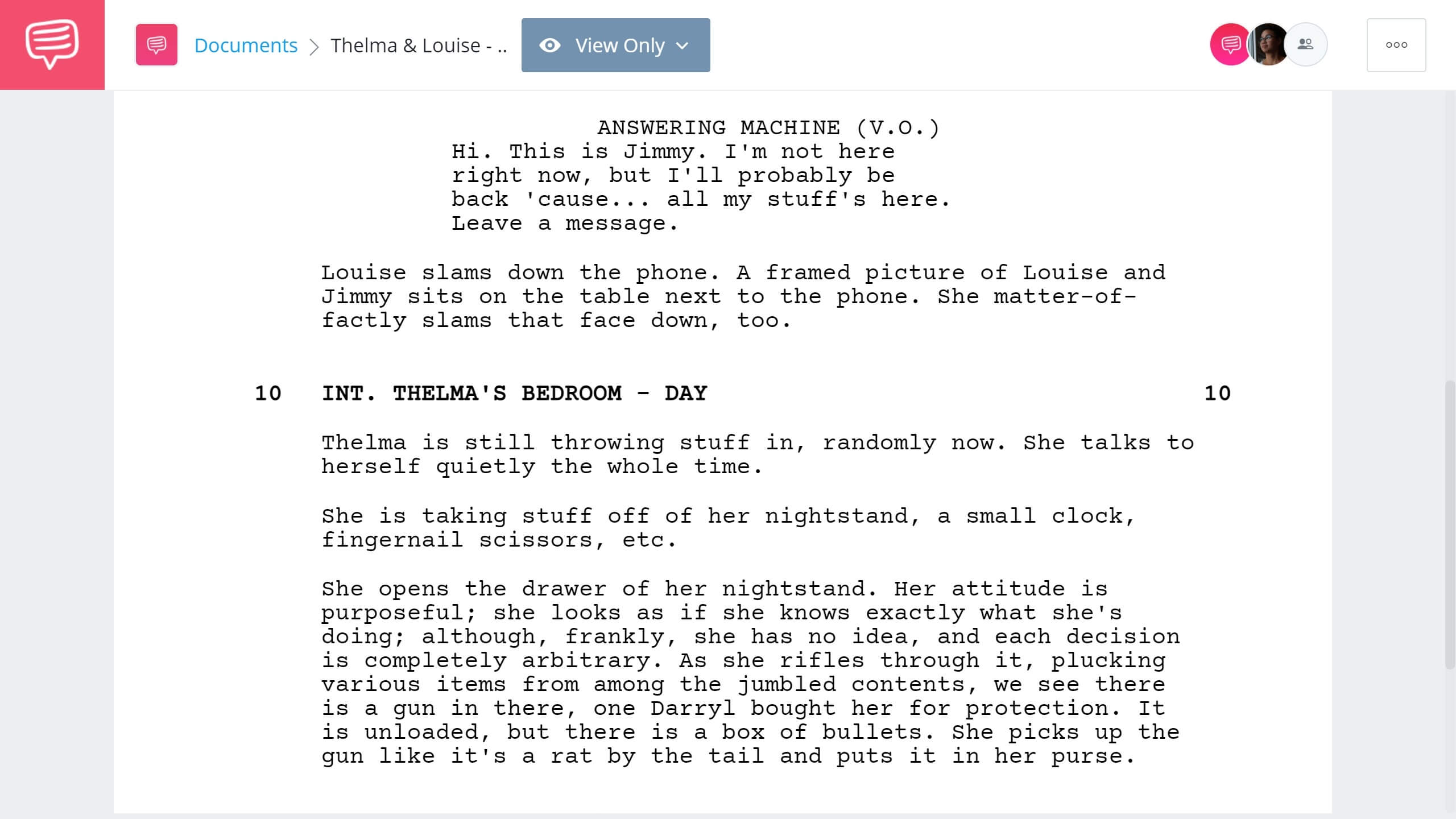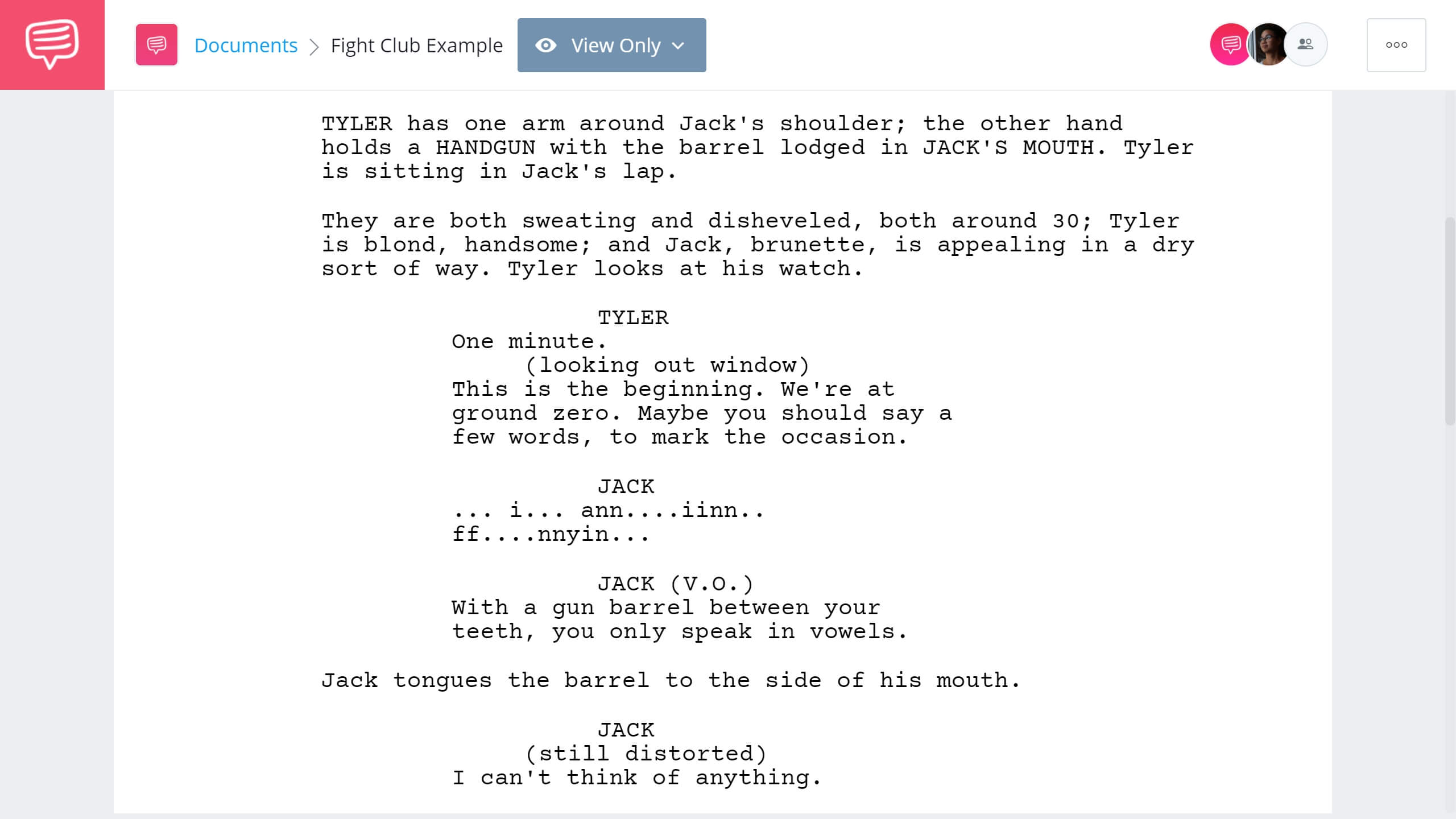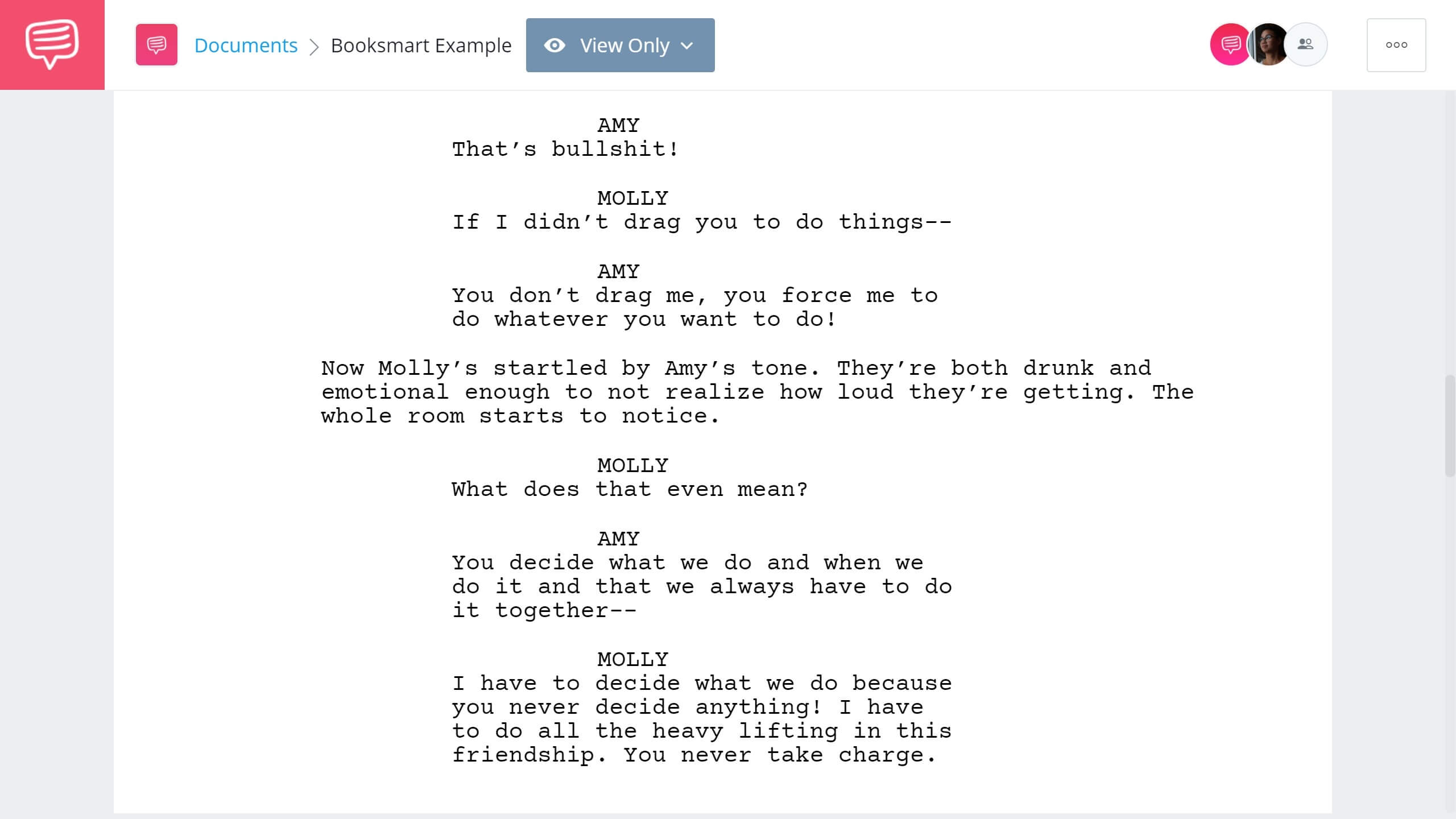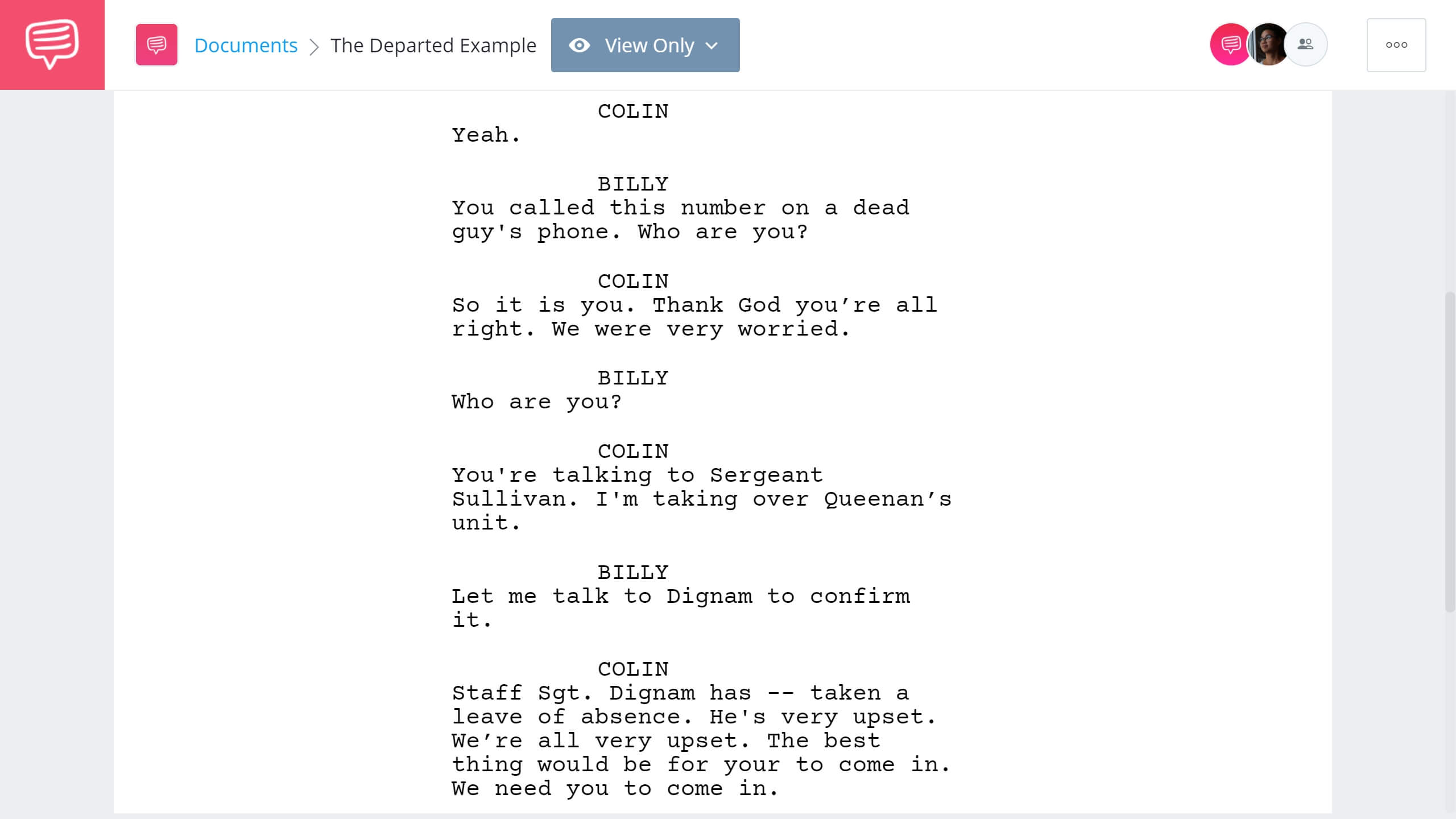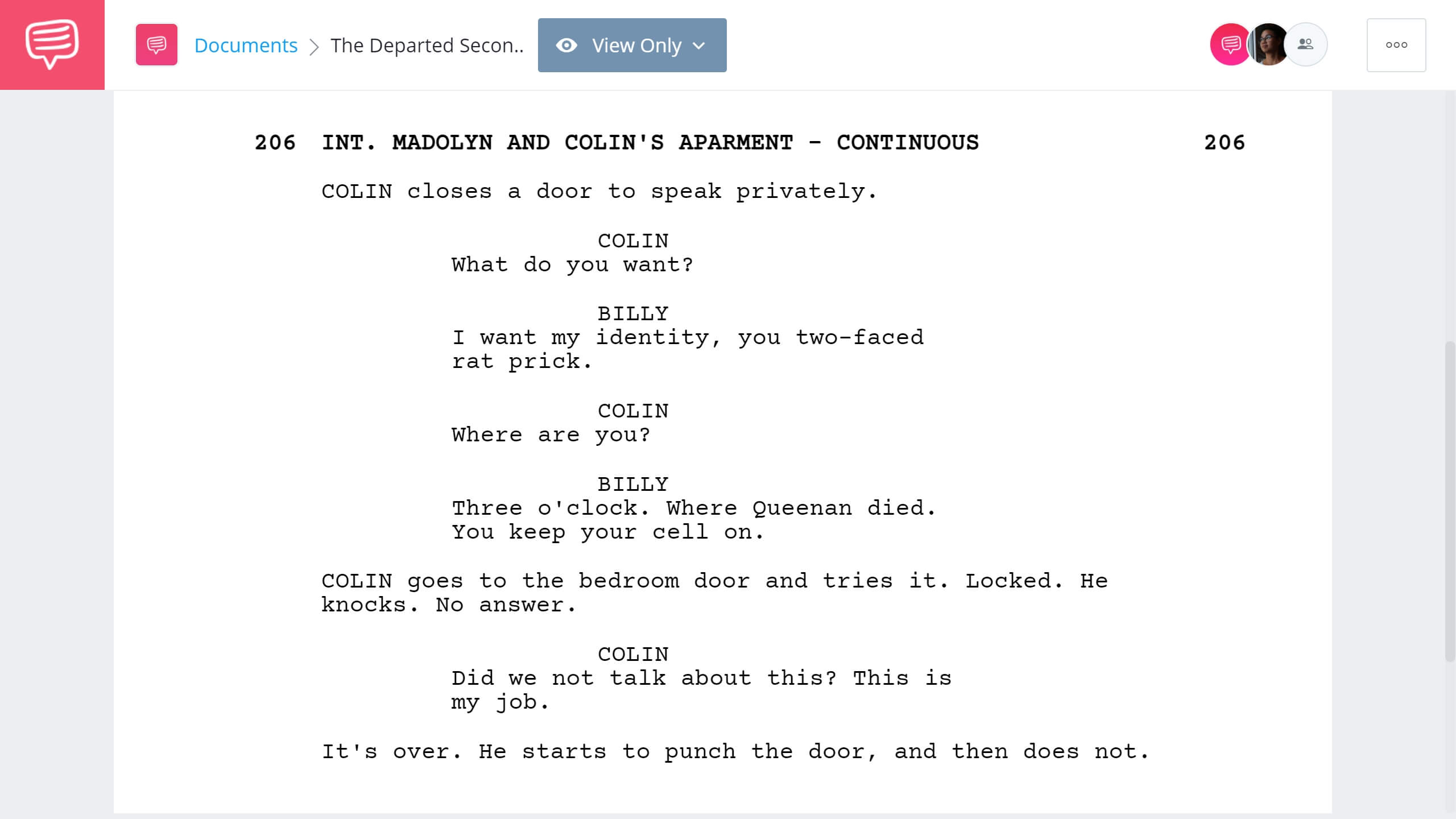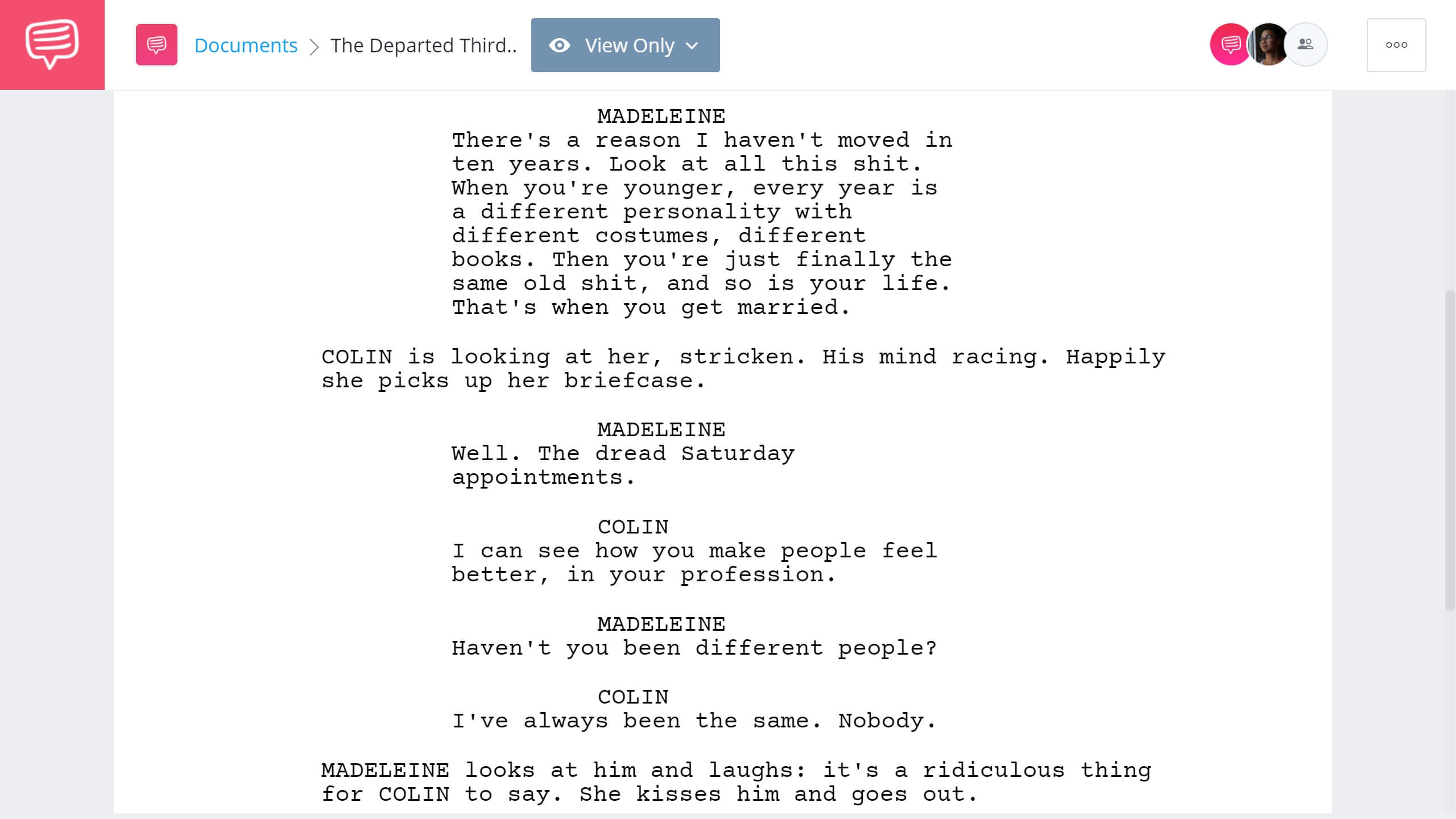Writing dual protagonists is generally frowned upon, unless you’re one of the select few who can break the rules, like Quentin Tarantino (Once Upon a Time in Hollywood) or the late William Goldman (Butch Cassidy and the Sundance Kid). Critics argue that writers, especially amateur ones, can get lost in the logistics attempting to craft two protagonists. Others suggest that writers attempt to erect dual protagonists to distract from weak, unformed solitary ones. Let’s face it. Crafting a single endearing protagonist poses enough challenges as it is. Why throw in two? But so many of our favorite films (When Harry Met Sally, La La Land) would be nearly impossible to reimagine as solo journeys. In this post, we’ll uncover the secrets behind crafting dual protagonists that actually work.
Spoiler Alert: Please note, this article does contain some spoilers for the films Toy Story, Thelma and Louise, Booksmart, and The Departed.
Dual Protagonists
How do dual protagonists work?
Though the structure can get a bad rap, writers can use dual protagonists to expose their character’s strengths and weaknesses, heighten suspense, and add layers of nuance to the theme and message of the story. Here, we’ll explain what dual protagonists are, how writers use them, and give you some tips for how to make writing dual protagonists in film a little less intimidating.
DUAL PROTAGONIST DEFINITION
What are dual protagonists?
Dual protagonists are characters who are both the central actors in a story, work toward a shared or similar goal, and take up approximately the same amount of screen time. Like most protagonists in film, they must both embark on inner and outer journeys that culminate in an emotional or physical change. They must both have higher stakes than any other character in the film. Dual protagonists in film typically work well in buddy comedy, romance, or action-packed genres. Often, the two leads have a shared outer journey, but they can also set out on their own journeys in parallel narratives. You might also see dual protagonists labeled under co-protagonist, two protagonist, or dual narrative films.
The Function of Dual Protagonists
How writers use dual protagonists
But, what are dual protagonists to writers? There are many functions for how writers use dual protagonists. Dual protagonists in film can augment the story’s theme, formulate tighter bonds between characters, and create opportunities for more suspense.
Writers can also use dual protagonists to underscore their main character’s strengths and weaknesses and accentuate their character arcs. If you do decide to write dual protagonists, here are some guidelines for how to use the structure to achieve similar results.
Dual Protagonist Tip #1
Distinguish your dual protagonists
If your dual protagonists act as a team and pursue a united external objective, make them foils of one another to balance your story. The juxtaposition provides the viewer with more opportunity to understand the characters on a deeper level and helps elucidate their inner needs and wants. Though they share an external journey, they venture on distinctive personal journeys.
Take, for example, Toy Story. Dual protagonists Buzz Lightyear and Woody share an external objective to escape the sadistic Sid’s toy-mutilating clutches and return to Andy. But their varying personalities expose their flaws and reveal their internal needs.
Buzz’s delusion that he’s a space ranger makes him adaptable and willing to explore a new world. This contrasts with Woody’s inflexible desire to control his reality as Andy’s favorite toy. Buzz’s desire to save the universe from Emperor Zurg is more selfless than Woody’s: to be the centripetal mainstay in Andy’s toydom.
In the following excerpt, Woody’s rigidity doesn’t allow him to see outside of the box when Buzz says he can fly. Buzz’s optimism helps him improvise and ‘fly,’ highlighting Woody’s stubbornness to the rest of the toys. We imported the script into StudioBinder's screenwriting software to get a closer look.
How to Write Dual Protagonists • Read the scene from Toy Story
Concurrently, Woody’s grounded grasp on reality illuminates Buzz’s need to come to grips with reality. When Buzz watches a ‘Buzz Lightyear’ commercial and realizes he’s a toy, he spirals into a deep depression. In the following exchange, Woody’s frankness is the catalyst for Buzz to reframe his downcast perspective and understand the joy of being a toy.
How to Write Dual Protagonists • Read the Woody and Buzz scene
Buzz needs to understand he’s a toy, and Woody needs to accept other toys. Though their inner needs differ, they both undergo a change and pursue their shared goal with a renewed motivation.
Likewise, in the beginning of dual protagonist feature, Thelma and Louise, screenwriter Callie Khouri juxtaposes her leads’ mismatching personalities right off the bat.
In this sequence, Thelma and Louise are packing for their weekend trip. Thelma’s suitcase reflects a fly-by-the-seat-of-her-pants mentality as well as an indecisive personality. Her room is disheveled and over-the-top. She fills her suitcase to the brim with clothing, much of which she likely will not use on her three day excursion.
Thelma & Louise • Road Trip Scene
Then, we flip to Louise’s room, which is scrupulously organized and clean. She has carefully packed her suitcase with precisely just the right amount of clothing she needs for the weekend. The two characters could not be more different and yet, they both share a goal to free themselves of their abusive and neglectful partners and dead-end jobs.
Like Woody and Buzz, Thelma and Louise, share the same external goal, but they need different things. Thelma needs the confidence and the decisiveness to take charge of her life. And prim and put-together Louise needs to let someone else take charge and expose her vulnerability. They both change in the film and make a united decision to wrangle their own destinies. Foiling is another critical example of how writers use dual protagonists.
Dual Protagonist Tip #2
Don’t let your duals duel (too much)
Some writers might mistake their stories as dual protagonist screenplays. Make sure that both of your characters qualify as dual protagonists and that you don’t mislabel an antagonist or a mentor in your script for a dual protagonist. The Fight Club script, for instance, is commonly misidentified as a dual protagonist structure.
Though the characters Tyler Durden and Jack seem like two leads who each share a hefty amount of screen time, it’s important to note that their goals are not aligned, and thus they are not dual protagonists. Jack’s goal is to escape from the scourge of materialism and the monotony of his humdrum life.
Tyler’s goal is to destroy the materialistic world, and Jack along with it. He tempts him to escape his reality through destruction, not face it.
How to Write Dual Protagonists • Read the first scene in Fight Club
In the very opening scene, Tyler and Jack are introduced to us in a vicious tussle, fighting over a weapon. If your duals are dueling too much, then chances are you are writing an antagonist.
Between an antagonist and protagonist, only one can succeed. This does not proscribe your two leads from clashing.
Alternatively, in Booksmart, high school besties, Molly and Amy, aim to compensate for their nerdy four years of high school with an epic night of fun before graduation. But their plan to hook up with the hotties goes awry when the hotties hook up with each other. This culminates in a fight between the two best friends, that, albeit, does resemble a duel.
Molly & Amy Fight Scene
The difference here is that even at their worst, the two protagonists are not trying to work against the other’s goal. Like in a typical hero’s journey, they have reached rock bottom, which in their case, results in them turning on each other. Even so, they are both in this, together.
How to Write Dual Protagonists • Read the Booksmart Example
In fact, Amy instigates the exchange because she’s trying to protect her friend from finding out that her crush hooked up with Amy’s crush.
If Molly found this out, she too would fail to achieve their shared goal to have a ‘bitchin’ time partying on their last night in high school.
Yes, your dual protagonists might, and should, butt heads from time to time. They will, undoubtedly, hold conflicting ideas for how to achieve their ends, but they should never actively obstruct the goal of a co-protagonist.
Dual Protagonist Tip #3
Mirror your dual protagonist’s journeys
If you do opt to tell a parallel narrative, in which your two main characters take different external journeys, make sure they intertwine, at the very least thematically. Optimally, dual protagonists in film will meet in person at some point in a parallel narrative.
In The Departed, dual protagonists Colin Sullivan, a mole for the Irish mob fastened in the police department and Billy Connolly, an informer for the police department fastened in the mob, do not interact until late in the film.
But their respective journeys intersect and eventually collide. Unlike dual protagonists who venture on a single journey together, two leads in a parallel narrative will take separate external journeys, but their internal arcs will mirror one another.
Colin and Billy mirror one another, despite all outward appearances. Every time he takes a breath, Colin is receiving a promotion in the police department, while Billy slums it in some Southside bar taking beatings. But, internally, they both are losing sight of themselves. In their very first interaction, Billy asks Colin, “Who are you?” Billy has reckoned with the same question internally throughout the film.
The Departed • 'Someone Else Every Day' Scene
Colin and Billy’s goals are the same. They are both attempting to identify each other, the moles, before they are outed. At the peak of this interchangeable cat-and-mouse game, they unravel as they struggle to hold onto their identities.
How to Write Dual Protagonists • Read The Departed Example
In their third and penultimate exchange, Colin asks Billy what he wants and Billy answers, “My identity.”
How to Write Dual Protagonists • Read The Departed Example
In another scene, Colin voices his doubts about his own identity and worth to his fiancé and police shrink, Madeleine.
How to Write Dual Protagonists • The Departed Madeleine Scene
Later, in a separate conversation, Billy speaks with Madeleine as a patient seeking counseling. He, unwittingly, parrots Colin in his own words in the exchange, reflecting both of their existential crises.
How to Write Dual Protagonists • The Departed Madeleine Part 2
The Departed screenwriter, William Monahan, uses the dual protagonist structure, not only to mirror his protagonist’s internal struggles, but to amplify the theme of his story. Colin and Billy’s similar tragic tales artfully convey his cynical message: that fates are fixed and the justice and criminal systems use and discard their actors when they no longer serve their purpose.
The dual protagonist structure allows him to raise the stakes as he hurtles two main characters into dangerous waters. It’s also uniquely poised in The Departed to simultaneously expose the hypocrisy and brutality of two worlds.
CONCLUSION
Now it’s your turn
Whether you’re writing an upbeat buddy comedy or a high-octane drama, dual protagonists present you with a unique opportunity to add layers of depth to your characters’ inner journeys and the story’s central message. They might even make your audience more invested in your heroes’ journeys.
So, don’t be afraid to jump in and double the fun with two leads, and let us know how it turns out.
UP NEXT
What is a foil character?
Are your dual protagonists blurring together? If you have trouble creating foils of your characters or even remembering what foils are, don’t hate on yourself for throwing out your old college lit notes. Refresh your memory on foils and their functions in film. You can also read about some phenomenal examples of foils in classic cinema. Foil characters make your protagonists stand out, no matter how many of them you choose to write about.
